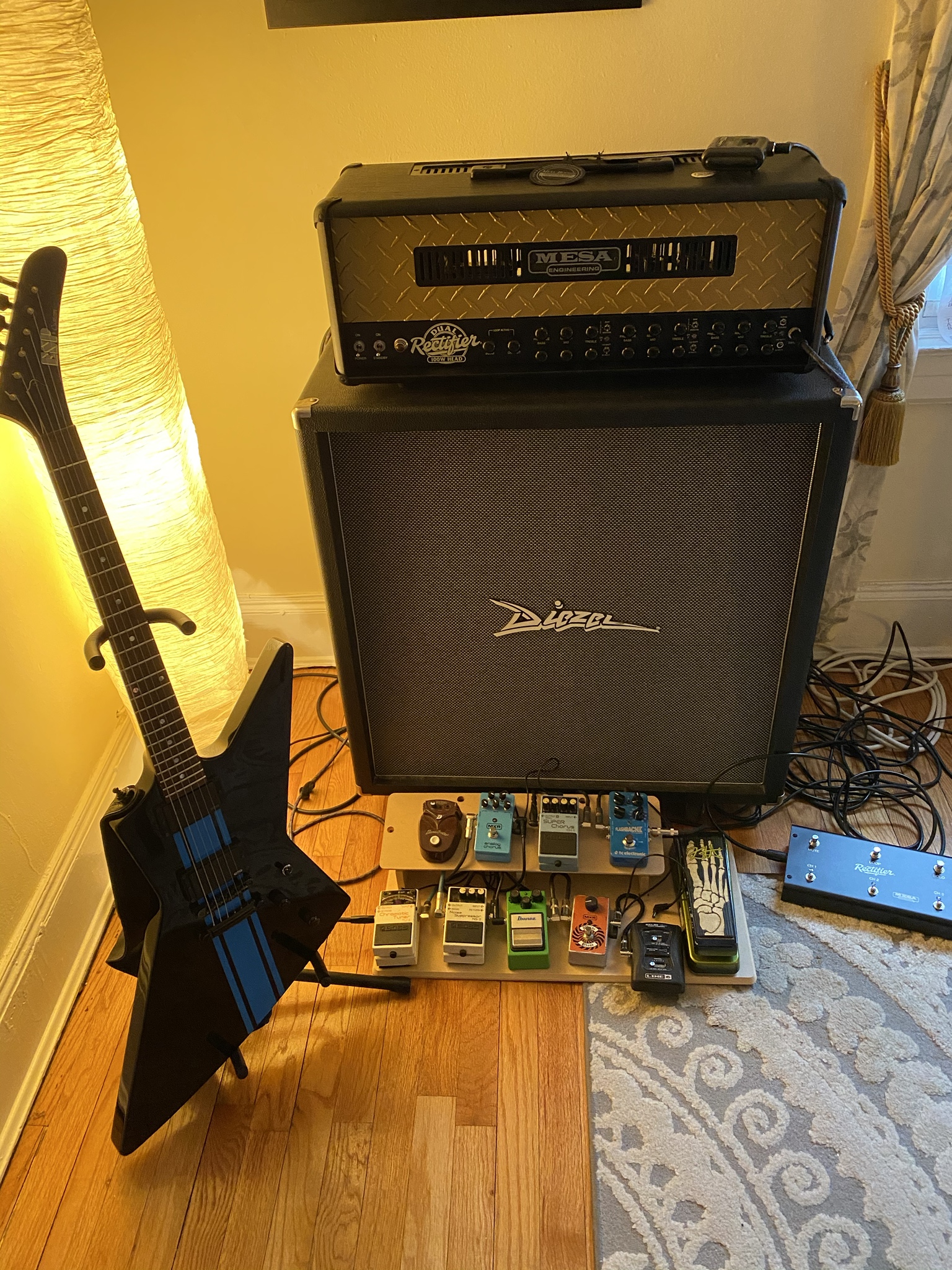sean106ESP
Well-known member
So bare with me here.
I used to own some Recto's in the late 90's. First one was a Rectoverb. Then in the 2000's I mained a Diezel Vh4 and then for about 10 years a mained a Mesa Mark V. Recently I got a new Vh4 and also a brand new 50th Anniversary Dual Rectifier. Love my Vh4 but it's in the shop (go figure lol)
I have not used a new recto in so many years and really enjoying this one so far.
So like most, I bought a TS9 as a boost in the front. Before buying it, I was having fun watching a ton of tone videos and it seemed like almost ALL Recto users had a TS9, 808 etc. or some sort of boost/OD in the front. I use all ESP custom shop guitars with EMG 60/81's and one Gibson Les Paul Custom shop aged guitar.
So my question is this. Why is it so hard to dial in a great overdrive tone for metal/Djent/chug chug type stuff without having a OD or boost in the front? (or I may just suck at dialing this thing in... as my VH4 is too easy to dial in :lol: ) I am in LOVE with the clean channel on the new multiwatt Dual Recto. WAY better clean channel than my VH4.
I feel like the amp alone without the boost flubs out too much whether I add gain (which I don't like to add much to be frank, I like a clean rhythm articulate palm mute chug), or roll back the bass etc.
Perhaps I need to mess more with spongy/bold and the diodes/tube tracking?
I was wondering for prog/metal etc. (I guess you can say metallica Rhythm playing in terms of riffing and palm muting that is clear and punchy, what are your settings? Settings in terms of channel 3, EQ on the front, diodes or tube tracking etc.
Any pictures too of your settings for channel 3 or 2 would be great WITHOUT a boost. Just curious what your fav settings are with a stock new Recto. Like I said, it's not an older modded one. Simply a brand new one out of the box.

I used to own some Recto's in the late 90's. First one was a Rectoverb. Then in the 2000's I mained a Diezel Vh4 and then for about 10 years a mained a Mesa Mark V. Recently I got a new Vh4 and also a brand new 50th Anniversary Dual Rectifier. Love my Vh4 but it's in the shop (go figure lol)
I have not used a new recto in so many years and really enjoying this one so far.
So like most, I bought a TS9 as a boost in the front. Before buying it, I was having fun watching a ton of tone videos and it seemed like almost ALL Recto users had a TS9, 808 etc. or some sort of boost/OD in the front. I use all ESP custom shop guitars with EMG 60/81's and one Gibson Les Paul Custom shop aged guitar.
So my question is this. Why is it so hard to dial in a great overdrive tone for metal/Djent/chug chug type stuff without having a OD or boost in the front? (or I may just suck at dialing this thing in... as my VH4 is too easy to dial in :lol: ) I am in LOVE with the clean channel on the new multiwatt Dual Recto. WAY better clean channel than my VH4.
I feel like the amp alone without the boost flubs out too much whether I add gain (which I don't like to add much to be frank, I like a clean rhythm articulate palm mute chug), or roll back the bass etc.
Perhaps I need to mess more with spongy/bold and the diodes/tube tracking?
I was wondering for prog/metal etc. (I guess you can say metallica Rhythm playing in terms of riffing and palm muting that is clear and punchy, what are your settings? Settings in terms of channel 3, EQ on the front, diodes or tube tracking etc.
Any pictures too of your settings for channel 3 or 2 would be great WITHOUT a boost. Just curious what your fav settings are with a stock new Recto. Like I said, it's not an older modded one. Simply a brand new one out of the box.























